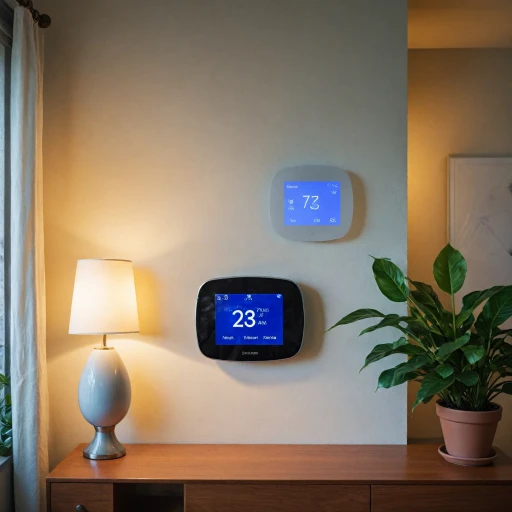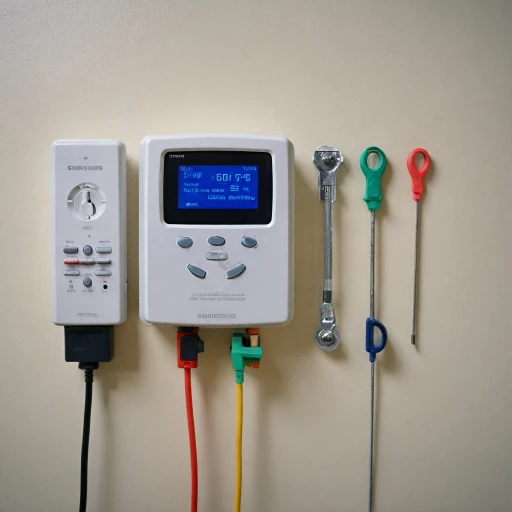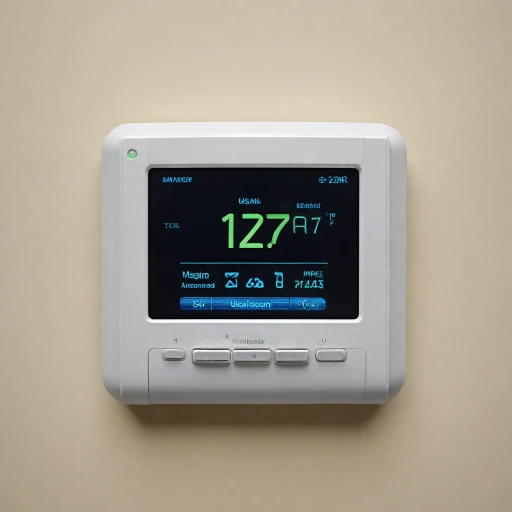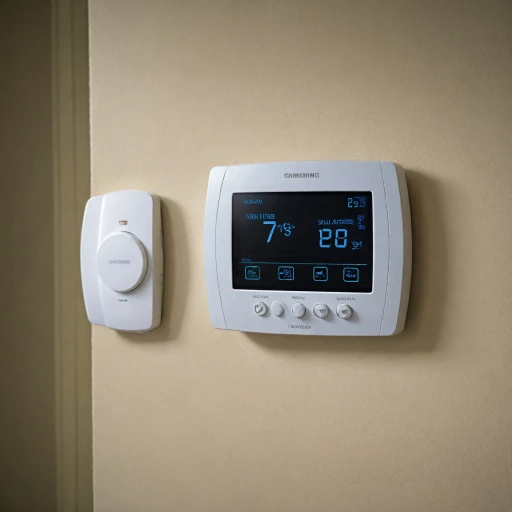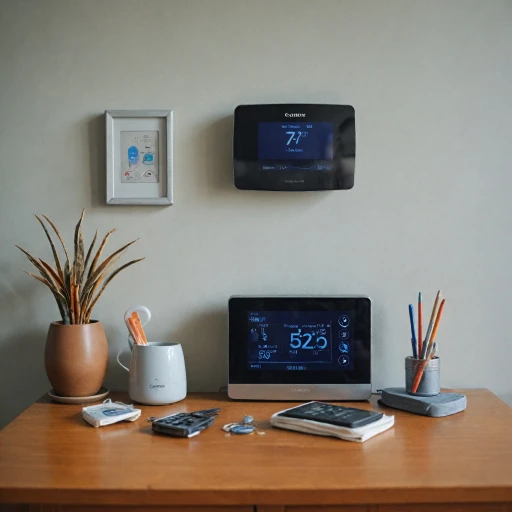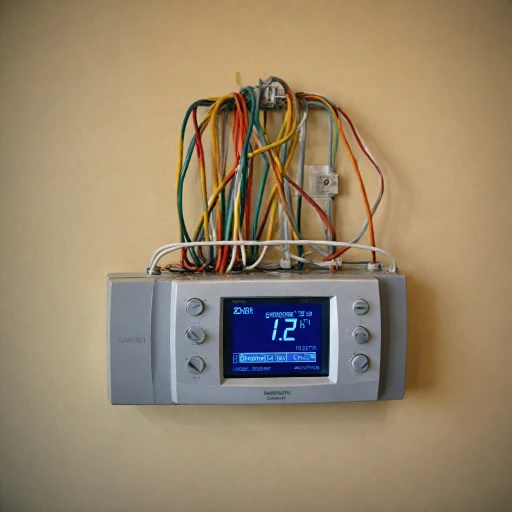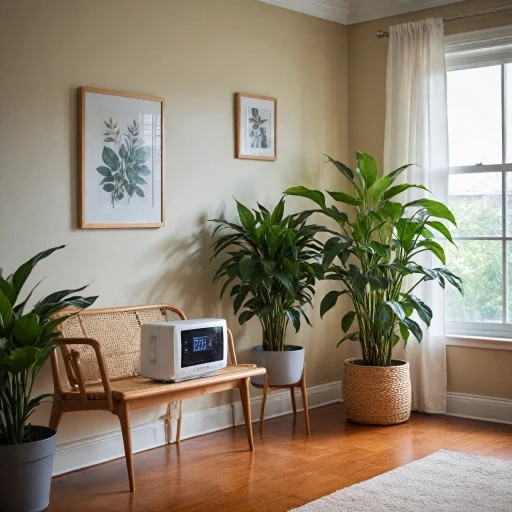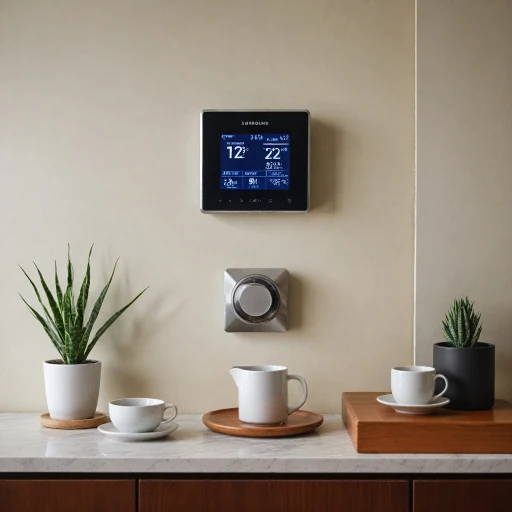
What is a Smart Hub?
Decoding the Component That Transforms Your Thermostat System
In the ever-evolving landscape of smart home technology, the smart hub epitomizes the intersection of automation and efficiency. But what exactly is a smart hub? Essentially, it acts as the central point or "nerve center" of your thermostat system, controlling various devices and enabling seamless communication among them. The smart hub is a piece of telematics hardware that manages an array of operations, ensuring that your equipment asset—like your smart thermostat—functions optimally.
Distinguished by its ability to gauge insights and facilitate operations management, the smart hub is an indispensable equipment asset within your smart home. Equipped with telematics hardware and software, it provides a consolidated platform for data acquisition, enabling users to extract valuable insights and enhance asset utilization. By integrating these elements, the smart hub offers a streamlined approach to managing energy consumption and ensuring your thermostat operates efficiently.
Moreover, the smart hub can extend its functionality to bulk logistics, asset utilization, and maintenance management, making it a critical player in heavy construction and construction bulk operations. Its role in electric management makes it a valuable resource for companies seeking to optimize their electric usage, and for xbe customers or banneker partners looking to enhance asset utilization. The app interface often accompanies the hub, further simplifying operations management and making the process user-friendly.
For those interested in enhancing their smart home systems and fully leveraging the advantages of smart hubs, exploring additional integration possibilities can be instrumental. A closer look at smart home enhancements with homebridge may provide deeper insights into maximizing your thermostat's potential. As technology evolves, so does the potential of smart hubs to become even more ingrained in daily life, prominently showcased through applications like privacy policy-adjusted data management and third-party telematics interoperability.
How Smart Hubs Enhance Thermostat Functionality
Elevating Thermostat Potential Through Smart Hub Connectivity
Integrating a smart hub into your thermostat system opens up a world of possibilities that enhance its functionality far beyond temperature control. At the core of this advancement is the smart hub's ability to establish a seamless link between the thermostat and various devices, bridging the gap between different forms of smart hardware and software interaction. Smart hubs grant thermostats access to more complex data sets, enabling them to gauge equipment needs more accurately while improving asset utilization. This translates to more efficient energy management and better maintenance scheduling. For example, through telematics, a smart hub can assess how your HVAC system might best work under different conditions, creating opportunities for better operational efficiency. Additionally, smart hubs improve the overall management and operations of smart thermostats by allowing for remote access and control. Users can employ an app to monitor and adjust settings, further optimizing comfort while maintaining energy savings. Integrating telematics hardware and software with the hub facilitates advanced data collection and analysis, providing key insights into usage patterns and system performance. However, the implementation of a smart hub isn't without its challenges. Compatibility issues can arise, primarily if the equipment isn't designed for cohesive interaction. Ensuring seamless operations might require additional hardware or software acquisition, which can be a consideration for potential customers. Finally, it's crucial to recognize the role of privacy policy considerations when managing bulk data. As more devices and systems become interconnected, ensuring data privacy becomes a shared responsibility among users and service providers. To fully comprehend these and other aspects of smart hubs, readers seeking more details on integrating with specific systems like the Daikin thermostat can find a comprehensive guide here.Energy Efficiency and Cost Savings
Optimizing Energy Efficiency and Cutting Costs
Integrating a smart hub into your thermostat system can bring a significant improvement in energy efficiency, along with cost savings. One of the critical components that contribute to this efficiency is the smart capability of the hub to gather data. This data, often through gauge telemetry and telematics hardware, allows for precise control over your heating and cooling equipment. By adapting operations management features, the smart hub can learn usage patterns and make automatic adjustments to your thermostat settings. This adaptability enhances asset utilization, efficiently managing energy usage to reduce waste. As a result, you lower your energy bills while also playing a part in environmental sustainability. Moreover, the smart hub can provide insights into equipment performance with its sophisticated maintenance tracking. The telemetry data helps in mitigating downtimes and ensuring the reliability and longevity of your system. This precision in operations not only saves on regular maintenance costs but also pushes the boundaries of efficient energy management. Lastly, while enjoying these advantages, it's vital to ensure your personal data remains protected amidst the tech acquisitions that often accompany these advancements. By reviewing privacy policies before choosing a smart hub system, you can ensure that your data security is prioritized, providing peace of mind as you enjoy cost savings. To delve deeper into the specifics of how wiring can influence your smart thermostat's functionality, check out our comprehensive overview of the 4-wire thermostat wiring diagram. This exploration provides further insights into optimizing your system for peak performance.Compatibility and Integration Challenges
Integration: The Complexity of Getting Components to Sync
In the modern landscape of smart home technology, achieving seamless integration between various devices is often a complex undertaking. Smart hubs play a pivotal role in integrating thermostats with other equipment, acting as the central hub for operations management. However, ensuring compatibility and smooth synchronization can be rife with challenges. Some smart devices, including thermostats, may not be inherently compatible with every smart hub available in the market. This lack of interoperability can lead to significant hurdles in integrating new hardware with existing systems. For smarthub operations to function cohesively, it's crucial for users to gauge the compatibility between the smart thermostat and the hub before acquisition. Leveraging telematics data from smart device operations, users can better understand how these devices will interact within the ecosystem over time. Moreover, many manufacturers provide proprietary apps tailored to their specific hardware. While these apps enhance user experience and provide personalized management solutions, they can also pose limitations. Telematics hardware inside smart hubs serves to bridge these gaps by enhancing the availability utilization of your devices' full potential, but this remains constrained by both hardware and software limitations. Issues can also arise from integration with third-party telematics and other smart equipment. Companies involved in heavy construction or logistics bulk might face challenges in aligning their bulk materials management systems with a consumer-focused smart thermostat hub. Here, the end-user must address potential mismatches during the installation and configuration phases, where bulk installation and customization might be critical. Furthermore, as smart technology continues to evolve, integration challenges will persist. This complexity creates a continuing need for guidance and aid from vendors and service providers. The competitive landscape, including players like Banneker Partners, who contribute through investments in developing more integrative solutions, indicates positive trends towards improved compatibility. Such investments likely promise enhancements in equipment asset utilization, offering users a more streamlined and efficient smart home experience.Security and Privacy Concerns
Balancing Innovation with Privacy in Smart Hub Systems
In the evolving landscape of smart home technology, security and privacy remain top concerns for users when integrating a smart hub into their thermostat systems. As these devices become integral to managing home temperature efficiently, they also become involved in gathering substantial amounts of data. Smart hubs often work in conjunction with telematics hardware and software, collecting data to gauge the efficiency of equipment and asset utilization. This can include a range of information, from routine operations data to insights into energy consumption patterns. While this data can enhance decision-making and operational management for customers, it also raises privacy concerns.- Data Collection: Smart hubs collect bulk amounts of data to improve functionalities, potentially causing concerns about how this data is used, shared, or stored. A strong privacy policy is crucial to reassure users regarding how their information is handled.
- Third-Party Involvement: Often, third-party telematics and app providers are involved in the systems, adding layers to privacy considerations. Users need confidence that their data is protected, even as it flows between parties for maintenance and utilization.
- Security Measures: To ensure customer assets and information are safeguarded, robust security measures should be in place. This includes hardware and software protections, like encryption and secure network protocols, to protect against unauthorized access or cyber threats.
Future Trends in Smart Hub Technology
Emerging Innovations and Developments in Smart Hub Technology
The landscape for smart hubs within thermostat systems is ever-evolving, with continuous advancements that aim to enhance functionality and improve users' experiences. These technological strides manifest in various forms, from more effective equipment asset utilization to improved data management and operations.
As smart hub technology progresses, it's essential to consider the enhancements in telematics hardware. The integration of telematics solutions facilitates a seamless flow of data, allowing for real-time asset utilization insights and better decision-making in operations management. With gauge telematics, users can precisely monitor equipment and gauge administration, optimizing both availability and maintenance scheduling.
One significant trend is the shift toward more robust security measures, addressing privacy policy concerns and ensuring customer data protection. Smart hub developers are increasingly focusing on these aspects, given the growing importance of data security in the digital age. This attention to privacy extends to the acquisition of data, where companies ensure transparency and control over information handling.
Another trend is the rise of hybrid systems combining hardware software solutions. These systems aim to minimize compatibility issues seen with older models, thereby supporting smoother integration within different environments. The collaboration between smart hub developers and bulk logistics providers is also leading to innovations that cater to specific industry needs, such as heavy construction.
Looking ahead, the potential for smart hub technology encompasses enhanced interconnectivity between home devices, promoting more-than-ever efficient energy usage. Innovations in this realm may lead to smarter electric usage patterns, constantly monitored and optimized through xbe app platforms.
With these advancements, the role of the smart hub will continually evolve, setting new benchmarks in functionality and customer satisfaction. The partnership between technology developers and logistic bulk specialists is poised to spearhead this evolution. Understanding these trends is vital for both consumers and businesses to stay informed about the future prospects of their smart home investments.



